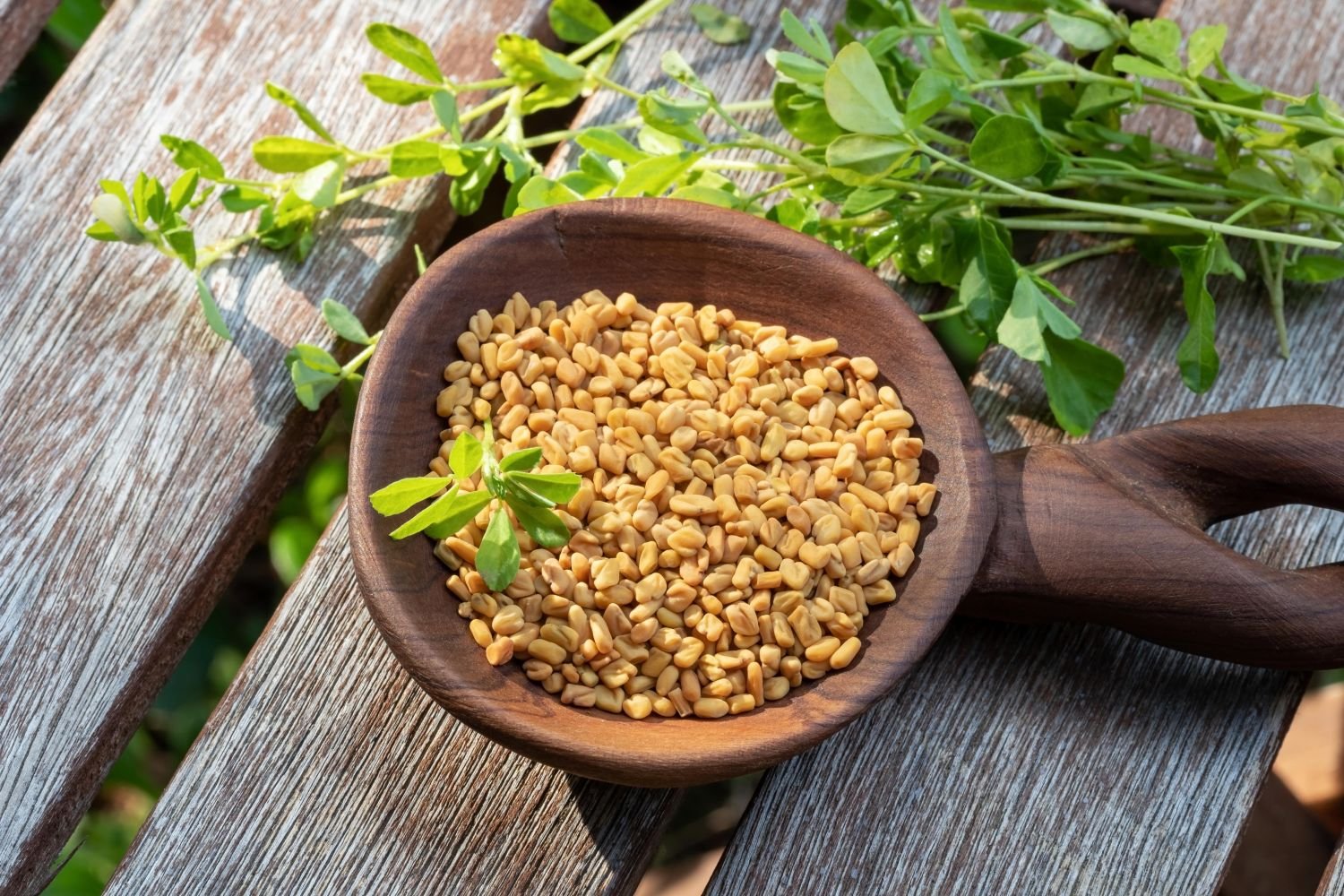Fenugreek or Methi is known to reduce risks of heart diseases and aids in weight loss. But, is fenugreek good for diabetics? How to use methi for diabetes? Let’s find out !
Fenugreek seeds (Methi) have been used in traditional medicine as well as various culinaries over centuries.
These seeds have a rich source of vitamins, minerals and antioxidants that protect the body from a wide range of diseases and free radicals.
It was traditionally given to lactating mothers as it increased production of breast milk. But, what are the health benefits of fenugreek seeds for diabetics? How to use fenugreek seeds for diabetes?
Let’s find out !
Fenugreek: Nutritional Profile
100g of fenugreek provides approximately 23g of proteins, 58g of carbohydrates, and 6g of fat. Fenugreek is a rich source of vitamins and minerals such as calcium, magnesium, iron, copper, manganese, phosphorus, and potassium. It also contains many phytoconstituents such as saponins, flavonoids, alkaloids, and steroids which possess anti-diabetic properties.
100 grams of Fenugreek (Methi) seeds contain the following:
| Calories: 323 |
| Total Fat: 6 g |
| Saturated Fat: 1 g |
| Trans Fat: 0 (NIL) |
| Cholesterol: 0 mg |
| Sodium: 67 mg |
| Total Carbohydrate: 58 g |
| Dietary Fiber: 24.6 g |
| Sugar: 0 (NIL) |
| Protein: 23 g |
| Vitamin A: 1% |
| Vitamin C: 5% |
| Calcium: 18% |
| Iron: 186% |
Diosgenin saponin present in fenugreek seeds (methi) contains anti-diabetic properties by stimulating insulin secretion. Additionally, soluble dietary fiber in methi helps control blood pressure, blood glucose, heart rate, etc.
Advantages of Fenugreek For Diabetes
- An amino acid (4-hydroxyisoleucine) in methi possesses anti-diabetic properties.
- Reduces risks of diabetes
- Improves breast milk production in lactating mothers.
- Aids in weight loss
- Prevents risks of heart diseases
- Natural pain relief
- A soluble dietary fibre (galactomannan) in methi seeds slows down the absorption of carbohydrates and reduces post-meal blood glucose levels.
Ways to Consume Fenugreek For Diabetes
- Consuming soaked methi seeds for diabetes is a common practice. Soak two teaspoons of fenugreek seeds in water overnight, and filter and drink the water in the morning.
- You can add methi dana powder to a cup of plain yoghurt and relish its health benefits.
- You may dry-roast the fenugreek seeds for 2 minutes. Add these seeds (whole or powdered) to curries and salads.
- Add fresh methi leaves to rotis or paranthas.
How Much and How Frequently To Consume Fenugreek?
The dosage of fenugreek for diabetes is decided based on the severity of the condition. Generally, you can consume methi seeds in a dosage ranging from 2 to 15 grams everyday.
Risks of Over Consuming Fenugreek For Diabetes
Overconsumption of fenugreek seeds may cause:
- Upset stomach
- Coughing
- Bloating
- Diarrhoea
- Allergic reactions
- Nasal congestion
Curious about natural remedies for diabetes? Learn how common herbs and plants could benefit blood sugar control
Diabetes-Friendly Herbs and Spices You Should Know About |
| Is Cumin Good For Diabetics? |
| Neem For Diabetes |
| How To Use Gurmar For Diabetes |
| Curry Leaves For Diabetes |
| Tulsi For Diabetes |
| Paneer Flower For Diabetes |
| Guava Leaves For Diabetes |
| Insulin Plant For Diabetes |
| Is Cinnamon Good For Diabetes |
Other Benefits of Fenugreek For Diabetes
- Antioxidants in methi possess anti-cancer properties.
- Saponins in methi seeds reduce bad cholesterol (LDL).
- Its soluble fibre helps in weight loss.
- It helps in increasing the flow of milk in nursing mothers.
Don’t Have Time To Read?
- Fenugreek is a common household kitchen ingredient used as a spice, herb, vegetable, or traditional medicine.
- It is a potent source of vitamins, minerals, and phytoconstituents that have anti-diabetic properties and stimulate insulin production. Its fiber helps control blood pressure, heart rate etc.
- Its alkaloids, like fenugrecine and trigonelline, have hypoglycemic properties to bring down sugar levels.
- You can consume fenugreek by soaking the seeds in water; using the powder in yoghurt, curries, or salads; or using the leaves in rotis or paranthas.
- Consume only 2 to15 grams of fenugreek seeds daily.
- Over consumption may lead to stomach upsets, bloating, coughing, nasal congestion, etc.
- Fenugreek also helps reduce cholesterol and weight loss, has anti-cancer properties, and improves milk flow in nursing mothers.
- Use Phable Care App to consult India’s leading diabetologists, order medicines, book lab tests, integrate Accu-Chek instant and other devices to get real-time remote care from the comfort of your home. Let’s treat diabetes together.
Friendly Asked Questions
Is Fenugreek Good for Diabetes?
Fenugreek is rich in soluble fibre and phytochemicals that slow down carbohydrate absorption and regulate blood glucose levels and insulin production. These make it a good supplement for people with diabetes.
When Should I Take Fenugreek for Diabetes?
Diabetics are recommended to take fenugreek seeds in the morning or along with a meal that is rich in carbohydrates.
How Much Fenugreek Should I Take to Lower My Blood Sugar?
Fenugreek is a powerhouse of nutrients that helps in lowering blood sugar levels. You can take 2.5 grams to 15 grams of fenugreek every day by adding it to different dishes.
How Can Diabetics Eat Fenugreek?
Soaking methi seeds overnight in water is a great way to use fenugreek seeds for diabetes. People with diabetes can then drink the methi water in the morning. Moreover, they can effectively use methi powder for diabetes by adding it to salads, yoghurt or curries.
Can I Drink Fenugreek Water Everyday?
Fenugreek water lowers blood sugar levels and may help control type 2 diabetes. Therefore, diabetics can drink fenugreek water every day and fully reap the benefits of fenugreek for diabetes.

1 comment
[…] Also Read: Fenugreek for Diabetes […]